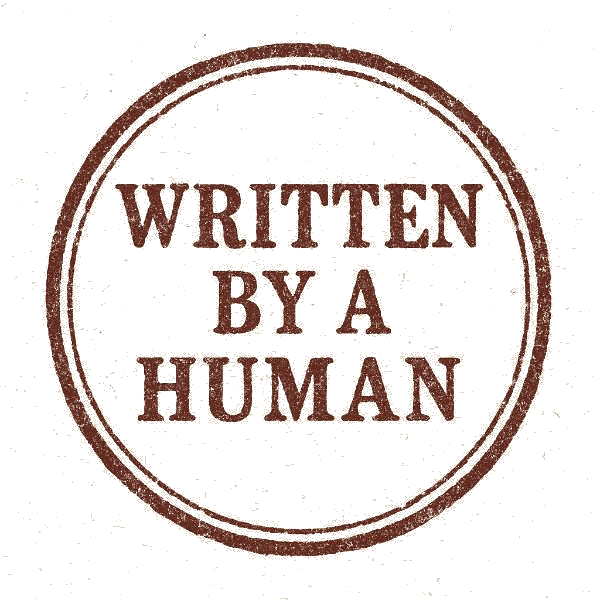How to tell whether the public service message you’re reading was written by a machine - and why it matters
Let’s face it, we’re all using AI to write now.
People with bad grammar or awkward phrasing seem to have been wiped off the face of the planet, as chatbots make them sound more eloquent than they ever did.
Public services are using AI to write messages too, and there’s nothing wrong with that. It saves time, reduces error and streamlines communication. But when a message you write - whether it’s your latest press release, social post or letter to tenants - looks like it was written by a machine, that can cause all sorts of trouble.
So what gives it away? What are the tell-tale signs your public service message might have been written by an algorithm?
Twelve signs your message was written by a machine
1. It could belong to literally anyone. You could swap out your council, department or agency name and no one would notice. “We are committed to delivering excellent services for all.” Great — which ones?
2. It contains words no normal human has ever said out loud. “Leveraging robust synergies to drive strategic outcomes.” Are you announcing the launch of a new leisure centre or planning the colonisation of Mars?
3. It’s terrified of emotion. A real person might write, “We know this has been frustrating.” The machine says, “We appreciate your continued patience during this service-delivery optimisation.”
4. It never names a single person. No “Emma from Accounts” or “our crews in Bolton.” Just “the organisation” or “the department.” The witness-protection approach to communications.
5. It sounds like a motivational poster. “We’re shaping a brighter tomorrow together.” Lovely, but right now people just want to know why the bins weren’t collected.
6. It’s clinically polite. Every sentence sounds like it’s been cleared by Compliance. Machines don’t (yet?) do warmth, nuance or humour.
7. It suffers from buzzword overpopulation. Digital, agile, transformative, inclusive, proactive, innovative, seamless, streamline, sustainable. To name a few.
8. It repeats itself like a chatbot having a nervous breakdown. “Working together… driving change… working together to drive change…” If you can predict the next line, so can ChatGPT.
9. It’s allergic to uncertainty. AI never says, “We’re still working on it.” It says, “We will deliver excellence through continuous improvement.” Which sounds reassuring, and means absolutely nothing.
10. It reads beautifully, but leaves you feeling nothing. Perfect grammar, flawless structure, zero pulse. Like someone with a huge smile full of very fake looking veneers.
11. There’s an undertone of trying too hard to prove it’s human. Chatbots love phrases like “real-world” and “applied”, or show random bursts of “frustration” (about the wrong things) to sound authentic. It’s the digital equivalent of saying “trust me, I’m definitely not a robot”.
12. It has a distinctive look. A fondness for long hyphens, Oxford commas and the occasional misplaced emoji.
Why that’s a problem
In public service, words aren’t decoration, they’re part of the service.
When your external copy (letters, posts, notices, consultations, guidance, anything the public sees) sounds like it was entirely written by a very polite robot, a few things happen:
People stop believing you. A message that could come from anyone feels like it came from no one.
You lose your local accent. Sterile messages sound like they weren’t written for the reader or by anyone who understands their world.
Accountability disappears. Machines don’t blush, apologise or fix things. People do.
You flatten complexity. AI loves smoothing rough edges. Public service is mostly rough edges.
You accidentally sound like marketing. The public doesn’t want to be “engaged through seamless transformation.” They just want information they can trust.
And trust is the one thing you can’t automate. Once people suspect your updates are mass-produced, every future message starts at a disadvantage.
Machines are brilliant at drafts and summaries but they’re hopeless at sounding like someone who actually cares.
Keep it human
At Teamshaper, we help public-sector communications teams find their human voice again.
Our Communicate module is all about writing that sounds like your team: clear, confident and genuinely you. Under the expert guidance of Sue Calthorpe, you won’t get soft feedback or generic advice. She’ll give it to you straight, helping your team sharpen its writing, reconnect with its voice and make every message sound like it was written by someone who knows what they’re talking about.
We’ll explore how your communication links to your organisation’s purpose, values and, most importantly, the identity of your reader.
Programmes built on our Communicate module are practical, team-based and shaped around your live public messages - letters, posts, briefings, procedures, tenders - so your copy reads like it came from a person, not from “the system.”
The process itself is energising, collaborative and often surprising. The results are lasting.
And just to be clear, AI isn’t the enemy here. It’s a brilliant tool: it saves time, reduces error and adds consistency. The skill lies in using it well, as an assistant, not an author. When the balance tips and messages start to look entirely machine-made, that’s when cynicism creeps in, trust drops and all those problems we’ve just talked about kick in.
Find out more here: https://www.teamshaper.co.uk/communicate
Because public trust shouldn’t have to pass a CAPTCHA test.

Found this helpful? Share it with your network:
Share on LinkedInWant to build stronger teams?
Contact us to learn more about our bespoke training programmes.
Or follow us on LinkedIn for updates and insights.

